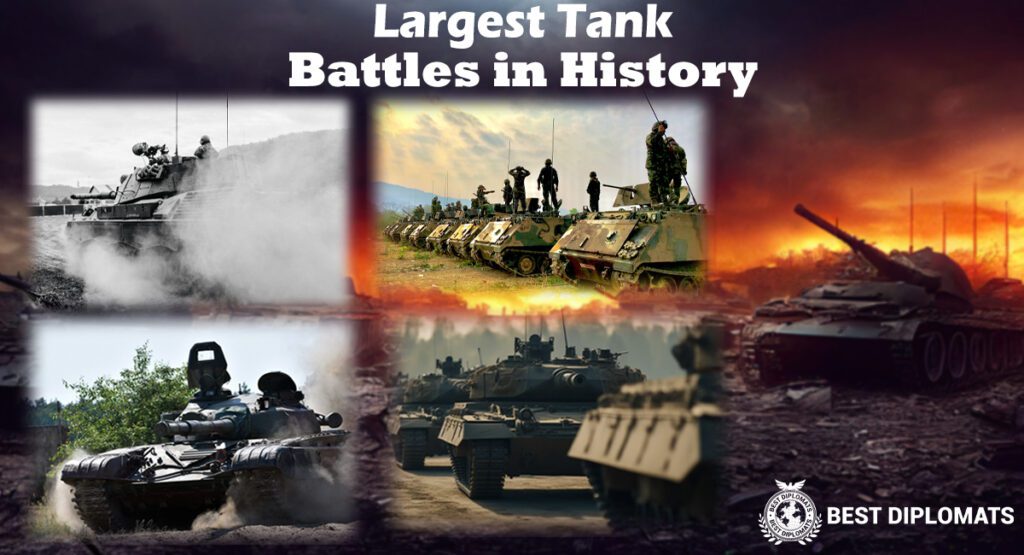Tank warfare has been a crucial component of military strategy for almost a century, evolving significantly in terms of armored tactics. From their debut in World War I to their modern state-of-the-art capabilities, tanks have played a vital role in shaping the battlefield. In this article, we delve into the history of tank warfare and how armored tactics have adapted over time.
During World War I, tanks were introduced as mobile fortresses to break through enemy lines, leading to the development of new tactics. In World War II, tanks became faster and more maneuverable, employed in combined arms formations with infantry and air support. The Cold War era saw further advancements in tank technology, focusing on mobility and firepower to conduct deep penetrations behind enemy lines. In modern warfare, tanks such as the M1 Abrams and Leopard 2 continue to be crucial assets, emphasizing speed, mobility, and firepower in network-centric warfare. As technology advances, armored tactics are likely to continue evolving to meet future challenges on the battlefield.
Tank warfare has been a prominent aspect of military strategy for nearly a century. From their humble beginnings in World War I to their current state-of-the-art capabilities in modern warfare, tanks have undergone significant evolution in terms of armored tactics. In this article, we will explore the history of tank warfare and how armored tactics have adapted and changed over time.
World War I
The use of tanks in warfare first emerged during World War I. The British were the first to experiment with armored vehicles in combat, beginning with the development of the Mark I tank in 1916. These early tanks were slow, cumbersome, and unreliable, but they marked the beginning of a new era in military warfare.
During World War I, tanks were primarily used as mobile fortresses to break through enemy lines. Armored tactics revolved around coordinated attacks with infantry and artillery support to punch through enemy defenses. Tanks were also used to provide cover for troops advancing on the ground.
World War II
World War II saw a significant advancement in tank technology and armored tactics. Tanks became faster, more maneuverable, and better armed. The German Blitzkrieg tactics, which relied heavily on the coordinated use of tanks and infantry, proved to be highly effective in combat.
Armored tactics in World War II focused on fast, aggressive maneuvers to outflank and encircle enemy forces. Tanks were used in combined arms formations, working in tandem with infantry, artillery, and aircraft to overwhelm the enemy. This era also saw the emergence of specialized tank units, such as tank destroyers and assault guns, which were designed to counter enemy armor.
Cold War
The Cold War era saw a rapid evolution in tank warfare, with both NATO and Warsaw Pact forces developing advanced armored vehicles and tactics. Tanks became more heavily armored and better armed, with the introduction of guided missiles, composite armor, and reactive armor.
Armored tactics during the Cold War focused on mobility and firepower. Tanks were used in combined arms formations, supported by infantry, artillery, and airpower. Maneuver warfare became a key aspect of armored tactics, with tanks used to conduct deep penetrations behind enemy lines to disrupt their rear echelon forces.
Modern Warfare
In modern warfare, tanks continue to play a crucial role on the battlefield. Advances in technology have led to the development of highly sophisticated armored vehicles, such as the M1 Abrams and Leopard 2 tanks, which are equipped with advanced targeting systems, thermal imaging, and integrated communications.
Armored tactics in modern warfare emphasize speed, mobility, and firepower. Tanks are used in combined arms formations, working in conjunction with infantry, artillery, and air support. The concept of network-centric warfare has also been integrated into armored tactics, allowing tanks to communicate and coordinate with other units in real-time.
In conclusion, tank warfare has come a long way since its early beginnings in World War I. From the slow, cumbersome Mark I tank to the highly advanced M1 Abrams, tanks have undergone significant evolution in terms of armored tactics. The use of combined arms formations, mobility, and firepower continue to be key aspects of modern armored warfare. As technology continues to advance, it is likely that armored tactics will continue to evolve to meet the challenges of future conflicts.
